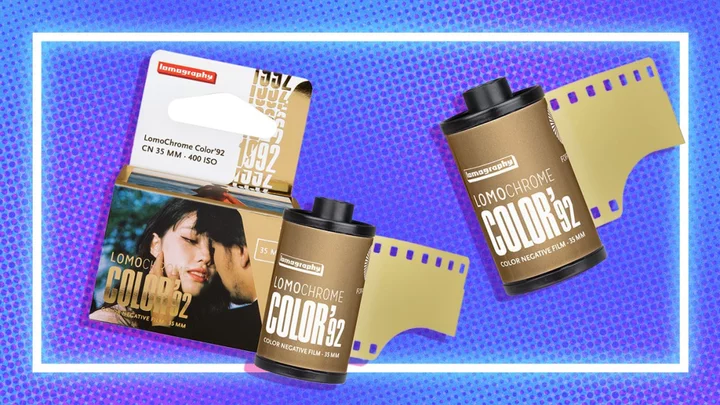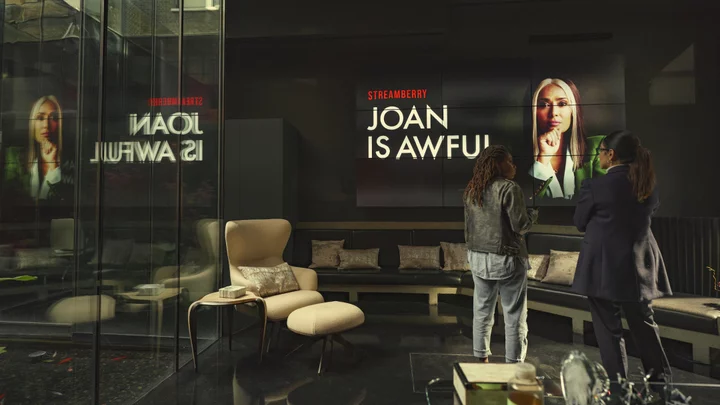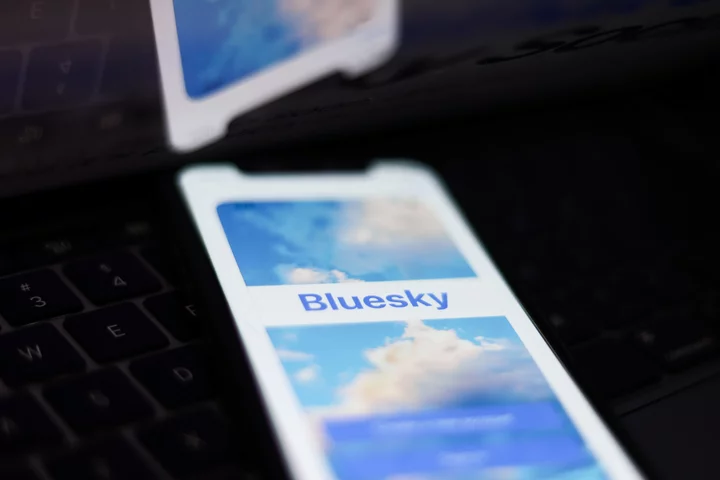Lomography celebrated its 30th birthday not too long ago and is marking the milestone with a new film, LomoChrome '92, that's based on the consumer-grade color negative film from the days of slap bracelets and pogs. The emulsion expands the current line of LomoChrome color films, with a look that emphasizes cooler temperatures for lush greens and deep blues, along with noticeably rough grain.
30+ Years of Lomography
It's hard to fathom that Lomography is in its fourth decade. The company started as a student art movement, enthused by a flood of cheap, Soviet-made cameras that inundated Western Europe after the fall of the Berlin Wall. Founders Sally Bibawy and Matthias Fiegl stumbled onto LC-A film cameras that were inexpensive enough for the pair of university students to afford.
Bibawy and Fiegl’s friends and colleagues picked up the LC-A too, thus kicking off a full-fledged art movement. The Lomography Society held its first exhibition in November 1992 and published a manifesto outlining its tenets that same month. That's where the '92 in the film name comes from—I won't fault Lomo for extending its birthday celebrations into the next year. For more details, you can read up on Lomo's history on its website or in our interview with Lomo's founders.
Today, the company sells a wide range of photo gear, all tilted for artistic and analog photographers. The LC-A line continues with models like the LC-A 120 for discerning photogs and fun experimental cameras like the panoramic Sprocket Rocket that give you looks you can't get with digital. Most people use a smartphone for snapshots these days, but Lomo has always catered to the niche of enthusiasts and artists who want something a little different for their photo work.
The Dream of the '90s Is Alive With LomoChrome
LomoChrome '92 joins a healthy line of LomoChrome films, including Metropolis, Purple, and Turquoise stocks. Lomography is initially launching this film in 35mm format for $12.90 per 36-exposure roll, but promises to eventually bring it to 110 cartridges and 120 rolls for medium format cameras.
Despite its chrome film branding, LomoChrome '92 (and others in the series) are negative films that develop in C41 chemistry. You still need to track down a specialty lab for processing, however. Local camera shops are a good place to start if you don't know where to go. Alternatively, you can still drop off film at many drug stores for mail-order processing, though you likely won't get your negatives back if you go this route. For more information, PetaPixel has a useful guide to help you find a lab.
I received a roll in 35mm for evaluation and settled on an 80s camera, the Pentax LX, and the original FA 43mm Limited lens from 1997 for testing. It's not quite a 1992 kit but was as close as I could get with the equipment on hand and I'll admit that some sentimental feelings came into play. The LX is my favorite analog SLR to use, and the 43mm spends a lot of time on the camera.
It took me a few weeks to go through the 36-exposure roll. I visited a few different spots for photo ops, including a local botanical garden and a state park, and rounded out the sample gallery with a few snapshots from around town and at home. I shot the roll at box speed (ISO 400) and relied on the LX's in-camera meter to handle shutter speeds. In bright light, I usually had to stop the F1.9 lens down a bit to keep shutter speeds reasonable, but the LX's speedy shutter (1/2,000-second) allowed me to keep the aperture wide enough to get some bokeh for the most part.
For processing, I took the film to a (somewhat) local lab—I had to cross a state line to get there, but the drive takes only about an hour round-trip. I use enough film to justify keeping a scanner at home (a Plustek OpticFilm 120), which gives me some extra control for digitizing. If you don't have a scanner, you can pay for scans from the lab or use a digital camera and macro lens to photograph the negatives. You can also get a negative holder kit to go on the front of your macro lens for around $70.
Chunky Grain and Rich Colors
The OpticFilm is capable of excellent resolution, around 5,300 dots per inch (dpi), but that might be overkill for LomoChrome '92. I was simply astounded by just how much chunky grain showed up in photos. The grain is rough and heavy enough to limit how much detail the negatives record. I scanned a roll of Kodak Portra 400 at the same time for comparison, which has an especially fine grain pattern for a 400 speed film. Conversely, the LomoChrome '92 grain looks a lot more like high-speed Fuji stock such as Superia 1600.
Color response couldn't be more different from the Superia 1600, however: Fuji's discontinued high-speed color stock is generally undersaturated, while LomoChrome '92 shows lush hues. The latter's character is more in line with the consumer color films like Kodak Gold Max and Fuji Superia 400, though LomoChrome '92 specifically emphasizes saturation in the green and blue channels. I used the film in late spring and it definitely put more green into grass and foliage than my eyes saw through the viewfinder. Likewise, color temperature leans cooler, even for warmly-lit sunrise scenes.
I stuck with box speed, so I can't speak to how the film responds to overexposure, but you typically get plenty of latitude with a negative film. LomoChrome '92 is meant for ISO 400 exposures, so it wouldn't shock me if you saw a bit less color saturation and grain at ISO 100 or 200 instead. Even so, it's worth noting that Lomo is billing '92 as a 400 speed film only, while it advertises its Metropolis, Purple, and Turquoise kin as ISO 100-400; those all show less saturation when you meter at ISO 100.
Where Were You in '92?
Analog photography was the de facto standard in the early 90s for a simple reason: the convenience of digital hadn't yet fully arrived. Nowadays, photogs who reach for a roll of film do so with intent and purpose. After all, running a roll of film through a camera can be like taking a breath of fresh air. This shift in audience has led to some changes in the market, including higher film costs, but we've also seen more and more boutique options that give film photogs alternatives to the big names—Fujifilm, Ilford, and Kodak.
Lomography isn't alone in making interesting films. CineStill, Kosmo Foto, Wolfen, and others also produce off-kilter emulsions. If the roughshod grain and deep greens from LomoChrome '92 don't appeal, it's worth exploring those other characterful options.









